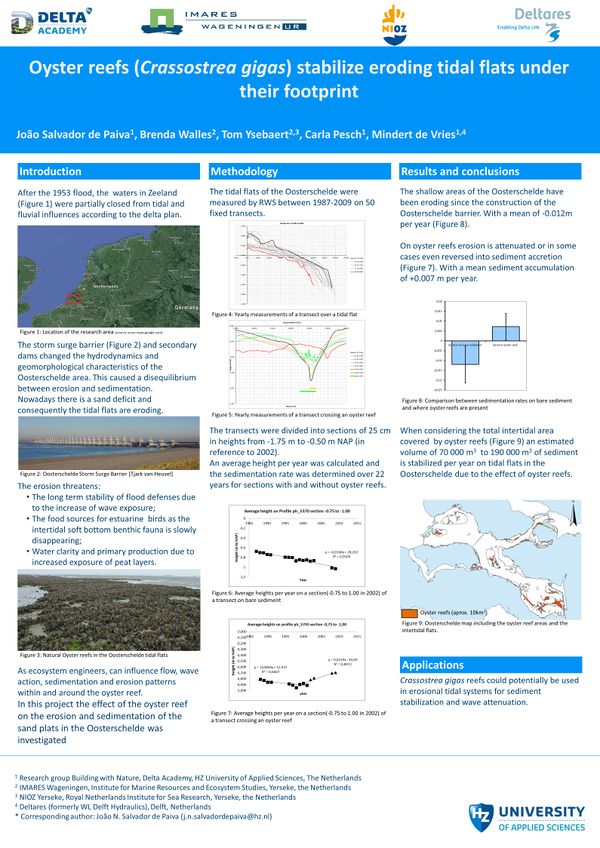Based on long term bathymetry research in the Eastern Scheldt delta transects with and without oyster reefs were compared (Figure 1). Based on height differences, the transects sedimentation and erosion rates were calculated and used to determine if there was a difference between transects without oyster reefs and transects crossing oyster reefs. The overall erosional trend of the Eastern Scheldt tidal flats became clear: the mean observed erosion was -0,012 meters per year. When considering the transects including oyster reefs a mean accumulation of sediment of +0,007 m per year was observed. The results of this research suggest that these ecosystem engineers, covering almost 10 km2 in the Eastern Scheldt, slow down the erosion of the tidal flats, as they act as sediment accumulators and stabilizers. An estimated volume between 70 000 m3 (comparison to a stable situation) and 190 000 m3 (comparison to the erosional tidal flats) of sediment is stabilized per year on tidal flats in the Eastern Scheldt due to the presence and effect of oyster reefs (Salvador de Paiva and De Vries, 2014).
- Effects of natural oyster reefs on the sediment balance, Salvador de Paiva, J. and de Vries, M., 2014.
Zie ook
- A comparison study between transects crossing oyster reefs and transects on the bare sediment of tidal flats of the Oosterschelde
- Effects of natural oyster reefs on the sediment balance
- Oesterdam sand nourishment - ecological and morphological development of a local sand nourishment
- The efficiency of oyster reefs on coastal protection areas: Oesterdam case
- Understanding the morphological development of the Oesterdam nourishment
- The effects of sand hunger and ecosystem engineering in the tidal flats of the Oosterschelde basin
- The conservation of eroding intertidal flats through nourishments: Ecological development on the Oesterdam tidal flat (Oosterschelde, the Netherlands)
- ANT Oosterschelde: Long-term trends of waders and their dependence on intertidal foraging grounds
- Ecosystem Services of constructed oyster reefs
- Oyster reefs and coastal protection







